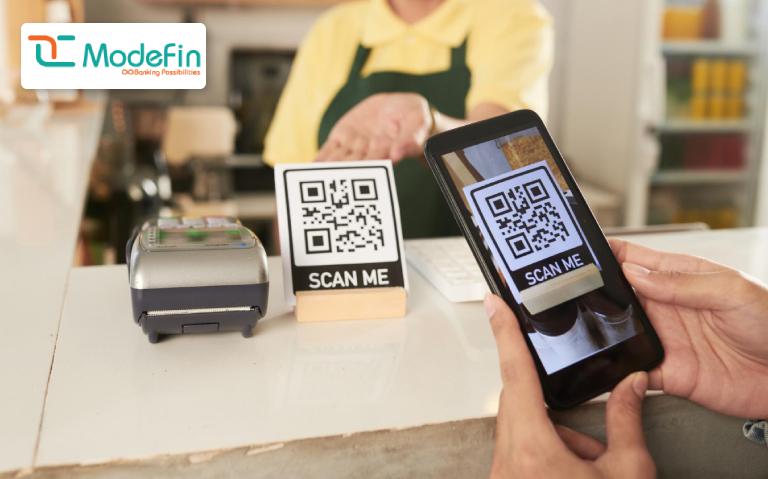
Revamping Payment Practices: The Emergence of QR Codes for Merchant Payments in Emerging Markets
Given the pace at which today’s digital customers function, businesses must implement strategies to collect payments quickly and efficiently. A Quick Response (QR) code offers that and more. QR codes have become integral to the payments industry in recent years, providing a cashless, convenient, and secure transaction method. In emerging markets, QR code-based payments are gaining popularity due to their accessibility and ease of use, as well as for merchant payments. They can also contribute to financial inclusion in these regions.
QR code-based payments in emerging markets have also successfully increased financial inclusion. By allowing individuals to make payments without needing a bank account, QR codes have allowed unbanked individuals to participate in the formal economy. In addition, QR code-based payments have positively impacted women’s financial inclusion, as they often face more significant barriers to accessing financial services than men.
Some of the case studies on Merchant QR code-based payment systems are:
Bhutan
Cashless payments are also surging using QR codes in Bhutan. The mBOB app by the Bank of Bhutan is a Mobile Banking app with a QR code-based system, Scan and Pay, that operates in Bhutan.
The mBOB app allows users to avail themselves of scan-to-pay services by installing them on their smartphones.
Ghana
Due to the vagaries of the COVID-19 pandemic, Ghana’s central bank launched a universal QR code payment solution, making it the first African country to introduce a universal QR code system.
The QR code payment system has provided customers and merchants convenience and safety when making payment transactions by only scanning the QR code to send payments.
Using QR codes, citizens in Ghana can make payment transactions to merchants from multiple funding sources like e-wallets, debit cards, or bank accounts.
Merchants can receive the amount of money instantly via static or dynamic QR codes.
Bangladesh
In alignment with the vision of Cashless Bangladesh of Bangladesh Bank, Meghna Bank has introduced QR-based merchant payment using MeghnaPay.
Mr. Sohail R. K. Hussain, Managing Director & CEO of Meghna Bank, inaugurated the ‘Scan & Pay’ service using Bangla QR by declaring Meghna Bank HQ Office Canteen cashless.
Myanmar
Myanmar has a 50 million populations between India, China, and Thailand. Unlike its neighbors, the country is essentially unbanked, with 74% of citizens needing an account at financial institutions and only 5% holding debit cards. And, if those numbers are unusual, consider that less than 1% of citizens have a credit card. Though unemployment is only 4%, one out of four people live below the poverty line.
Almost everyone in the country owns a cell phone, with 87% penetration. The mobile device will bring the country onboard to electronic payments, and they will do it with QR codes.
QR codes are often viewed to boost financial inclusion in regions with heavy cash usage that do not have access to e-payment systems.
Myanmar’s digital payment has gradually developed with the explosive growth of mobile and internet penetration, which has had a significant impact on its financial services sector.
With that being said, Yoma Bank introduced a new mobile application, “Next App,” designed to provide a more convenient and secure banking experience. With a focus on simplicity and efficiency, this version offers essential features that cater to your everyday banking needs.
Elevate Your Customer Service by Accepting Merchant QR Payments by Modefin
QR codes are ideal for markets with high digital banking and mobile use penetration. In these environments, you can easily set up payments with a mobile phone and an internet connection. There are also opportunities in less developed areas. With lagging infrastructure for traditional payment methods such as credit cards, offering QR code payments to customers could level the playing field regarding global digital payments.
Modefin’s’ Merchant QR Code Payment module will help merchants accept digital payments on their existing QR code, eliminating the need for onboarding. Modefin’s introduction of the Merchant QR Code Payment module on any Mobile banking app provides flexibility and convenience to customers. It also expands the usage of the digital money.





